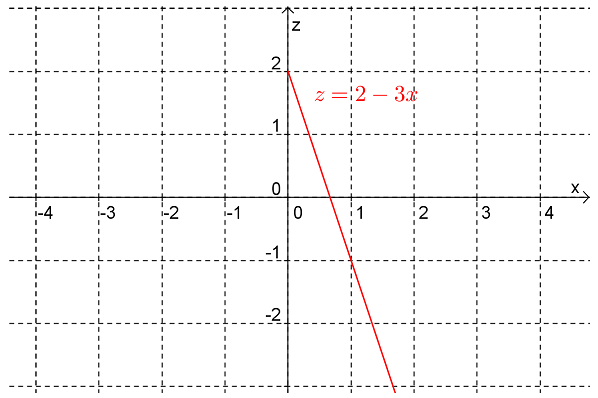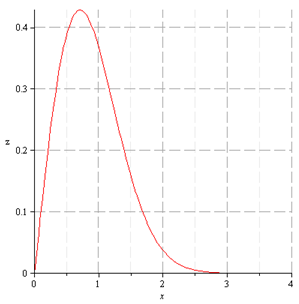Section 3.3 Surfaces of Revolution
The surface associated with the graph of \(f(x,y)=\sqrt{x^2+y^2}e^{-(x^2+y^2)}\) (see Example 3.1.9) is an example of a special kind of surface...a surface of revolution.
Definition 3.3.1.
A surface of revolution is a surface in \(\mathbb{R}^3\) obtained by rotating a curve about an axis.
Example 3.3.2.
Determine the equation of the surface obtained by rotating the curve in the \(xz\)-plane \(z=2-3x, x\geq 0\) about the \(z\)-axis.
Answer.\(f(x,y)=2-3\sqrt{x^2+y^2}\)

Now, note that the cross-sections of the surface of revolution perpendicular to the \(z\)-axis (i.e. the level curves) will be circles. For example the cross section at \(z=k\) will be a circle with centre \((0,0)\) and radius \(\frac{2-k}{3}\) and hence has equation
On re-arranging this equation we obtain
Putting this into \(f(x,y)=k\) gives
On repeating what we did in the above example in general gives:
Definition 3.3.4.
The equation of a surface of revolution obtained by rotating the curve \(z=f(x), x\geq 0\) in the \(xz\)-plane about the \(z\)-axis will be
Example 3.3.5.
Determine the equation of the surface obtained by rotating the curve in the \(xz\)-plane
about the \(z\)-axis.
Answer.\(z=\sqrt{x^2+y^2}e^{-(x^2+y^2)}\)

that is,
Example 3.3.7.
Is the graph of \(f(x,y)=4-x^2-y^2\) a surface of revolution?
Solution.Since we can write the function as
this surface can be obtained by rotating the curve in the \(xz\)-plane
Exercises Example Tasks
1.
Determine the equation of the surface obtained by rotating the curve \(z=\sqrt{4-x^2}, x\geq 0\) about the \(z\)-axis. Make a sketch of the surface.
2.
Is the graph of \(f(x,y)=xy^2-y^3\) a surface of revolution?